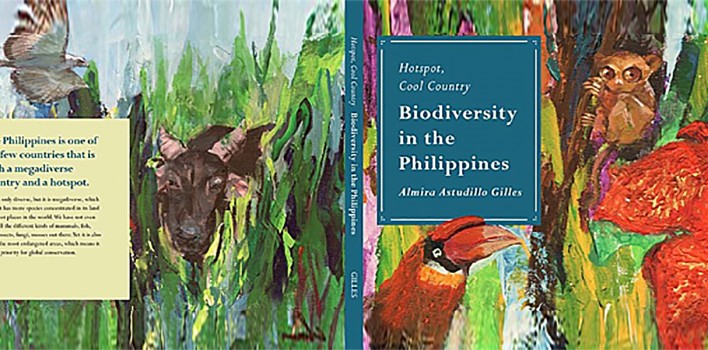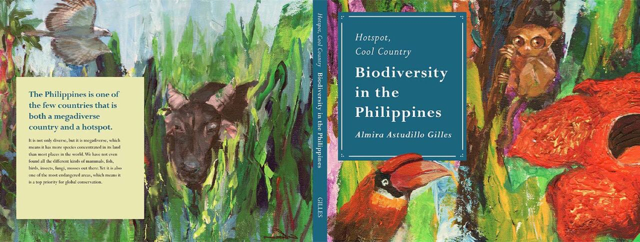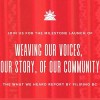Book Review: Hotspot, Cool Country: Biodiversity in the Philippines by Almira Astudillo Gilles
Book Review: Hotspot, Cool Country: Biodiversity in the Philippines by Almira Astudillo Gilles
By Cecilia Federizon
Hotspot, Cool Country: Biodiversity in the Philippines, written by Almira Astudillo Gilles, is an educational book that takes readers through the Philippines and its natural wildlife. It includes numerous pictures, graphs, tables, fact boxes and quick texts that explain science and describe unique organisms in the Philippines. The book provides various details on how the earth has evolved to create the Philippines’ distinct biological diversity. It is written and laid out in a way that allows children and non-scientific folks to easily read and learn about the country, in an enjoyable manner.
Overall, the book is an easy-to-read informative book about the Philippines’ natural habitats, wildlife, and organisms. Gilles believes that “fundamental societal change starts with the youth and their education.” Therefore, she wrote this book for the purpose of preserving the country’s and the world’s wildlife by educating young eager minds. American parks and nature reserves inspired her after moving to the United States for her graduate studies. Awarded the Philippine Presidential Award for Literature (2012) by former President Noynoy Aquino, Gilles explains that “many doors opened and I was naturally drawn to marine research. The more I got involved in funding these projects, the more aware I became of other habitats, other wildlife, and I met many scientists whose dedication I admired.” From this inspiration, Hotspot, Cool Country: Biodiversity in the Philippines was written where she collaborated with Philippine and international research scientists to create a factual environmental book about her home country.
She ensures that readers know the science behind the rare organisms and species found in the Philippines, some of which are endangered and threatened. In her book, there are explanations of how the earth works and how it has developed over time. Gilles uses analogies to keep things simple. For example, she uses an image of a healthy body to describe how a lively ecosystem works: all parts, small or large, have a specific function to keep the human body (or ecosystem) healthy and running. If one fails, something else will too. By providing significant background information, Gilles gives readers a fuller understanding and appreciation of the Philippines’ unique natural wildlife.
Many books that I’ve read about nature have mostly focused on the Canadian West Coast. Although it is understandable that these are the types of books I’ve been exposed to living in Vancouver, it is refreshing and interesting to read about the biodiversity of other parts of the world. In addition, Gilles’ book gives us a peek into the vastly different animals, plants and environments that exist in our world. Furthermore, I appreciate the ending of the book where she discusses the conservation efforts and specific actions we as individuals can take to help preserve the environment. It’s nice to have concrete suggestions on how to be a better world citizen in front of you instead of Googling. As she mentions, “knowledge is power. Learn about the plants and creatures that share their habitats with us, before it’s all gone.”
Gilles does an amazing narrative in giving an overview of the Philippines’ unique environment and how it has developed over time; and to imagine the countless organisms still left to be discovered.
Hotspot, Cool Country: Biodiversity in the Philippines is sold online on Amazon and in National Bookstores in the Philippines.
August 2017
 Canada
Canada










